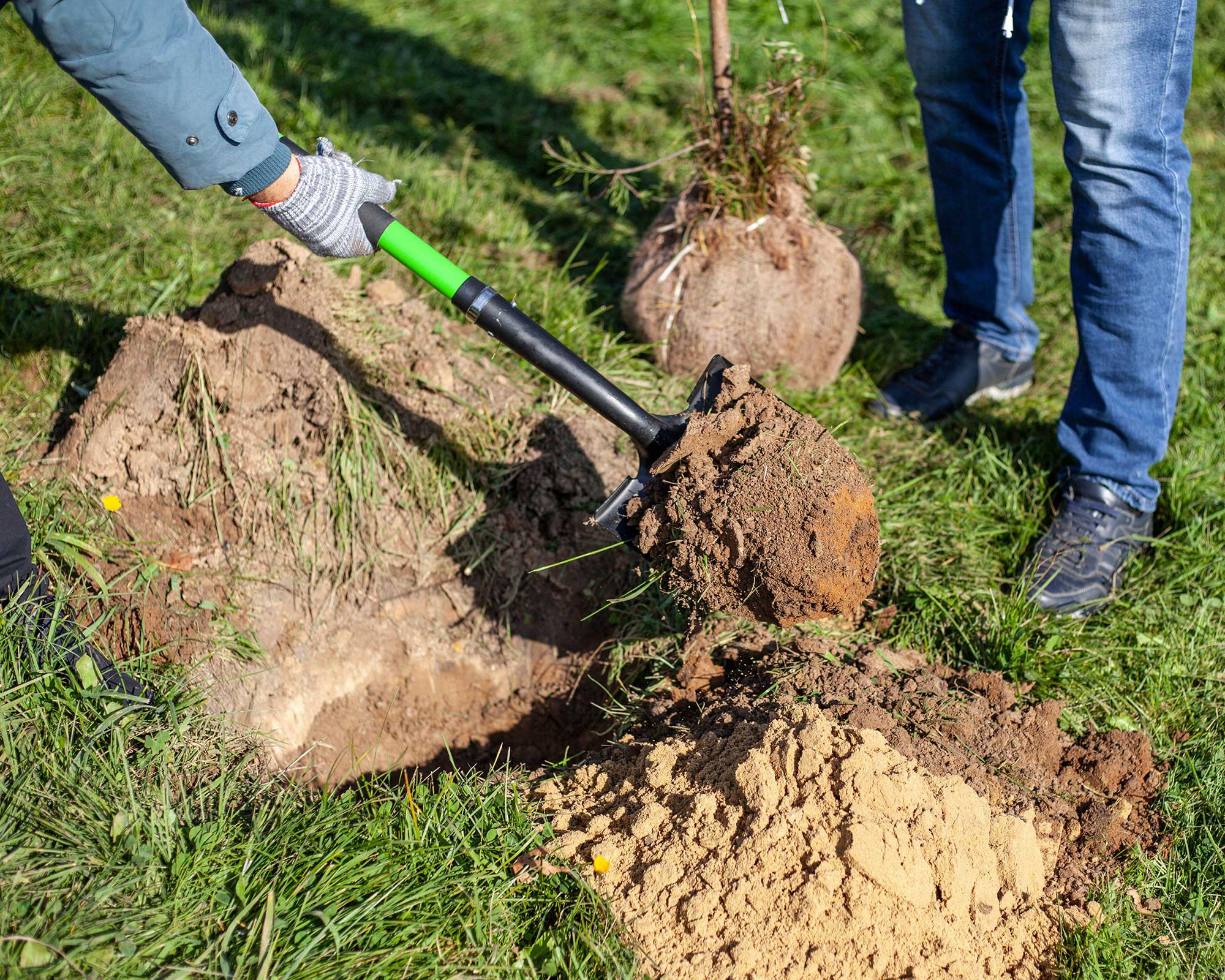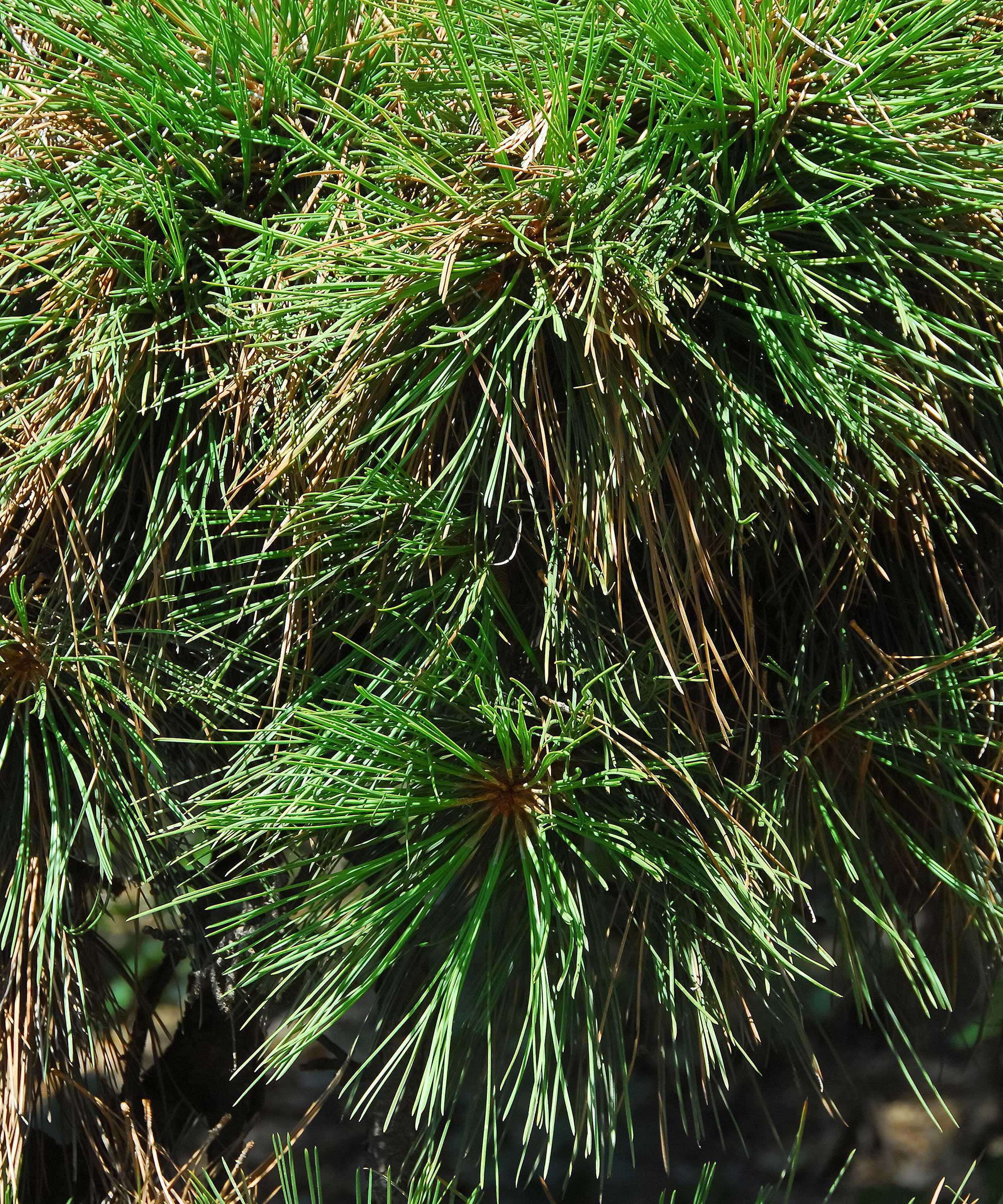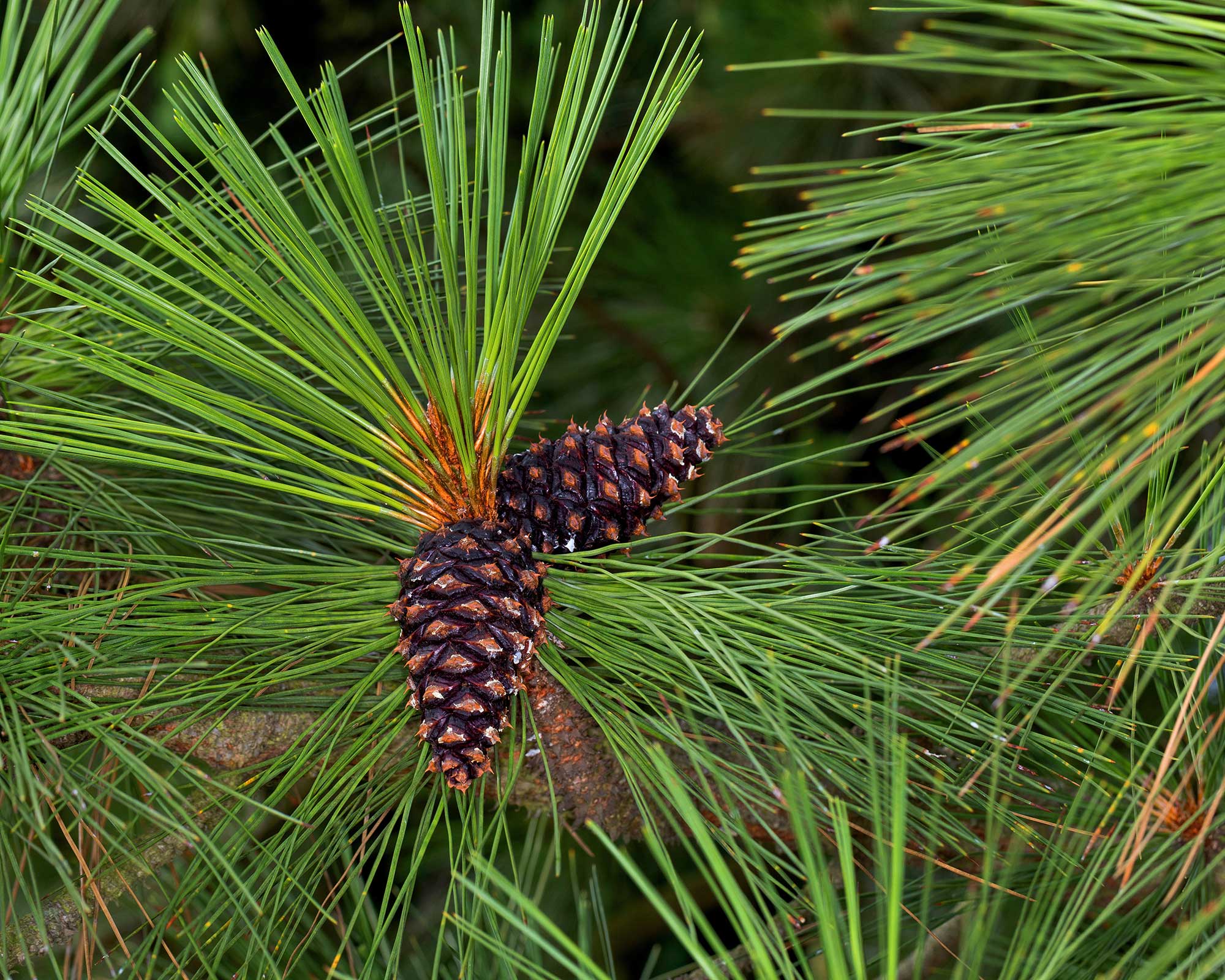Ponderosa pine care and growing guide: top tips for these trees
Learn how to grow a ponderosa pine in your backyard


The ponderosa pine is a towering and sculptural presence in gardens and a key species throughout much of Western North America. Its rugged good looks led the writer Arthur Plotnik to describe it as ‘a Clint Eastwood of a tree.'
Known by many as the ‘western yellow pine’, its scientific name is Pinus ponderosa. This draws on the Latin word ‘ponderosus’ and literally means ‘heavy pine’ – a reference to the weight of the wood of this evergreen tree.
Ponderosa pines are a major source of timber in the US, with forests also valued for the benefits they bring to wildlife and the contribution they make to the overall beauty of their environment.
It reaches lofty heights in its native environment. Just over a decade ago, one growing in Grants Pass in Oregon measured in at 268 feet (82m), with many others clearing 197ft (60m) or even 230ft (70m) within the space of 50 years. Elsewhere in the US, and in the UK, they are more likely to grow to around 66 to 98ft (20-30m), and it’s possible to rein them in even further with careful pruning.
The Hillier Manual of Trees & Shrubs (available on Amazon), describes it as a 'large tree of striking appearance,' that usually has a tall, clear trunk and scaly cinnamon-colored bark that smells of pineapple and stout. The surface of the trunk eventually splits into large plates before shedding as small chips. In a garden setting, this pine is prized for its long needles 'that dance in the lightest of breezes,' according to conifer specialist Grahame Oakey of Acorn Trees and Shrubs in Tiverton, Devon, along with its large pollen cones that emerge in a beautiful maroon color in spring.
Ponderosa pine key facts:
- Plant type: Architectural evergreen conifer
- Mature size: 66-98ft (20 to 30m) in a garden setting
- Soil type: All types but best in pH 6 or 7
- Time of year to plant: Late fall to early spring, ideally
- Pine cones emerge: Spring
- Pine cone color: Maroon
- Hardiness zones: USDA 3-7 (UK H7)
- Scientific name: Pinus ponderosa
- Common names: Ponderosa pine, western yellow pine

Types of ponderosa pine
Some US sources attach the scientific name Pinus ponderosa var. ponderosa to the Pacific ponderosa pine, while the Rocky Mountain version is Pinus ponderosa var. scopulorum. This latter variety, which is particularly prevalent in the Black Hills of South Dakota and Wyoming, usually has drooping branches, shorter leaves measuring between 3-6in (7.5cm-15cm) in length, and smaller cones.
Other varieties include Pinus ponderosa var. Peňáz, an upright and sparsely-branched tree with a single main stem bearing many needles, that grows to between 20 and 26ft (6-8m) in 10 years. Described by Grahame Oakey as 'slightly reminiscent of a mid-west mammoth cactus,' it’s been known since 1973 and is rare in cultivation.
If you're looking for a tree for a smaller garden, dwarf cultivars include P. ponderosa ‘Pondy’, which has light, blue-green needles and grows up to six inches (15cm) a year. It looks wonderful on rocky terrain amongst rockery plants. P. ponderosa ‘The Sphinx’, which is pyramidal in shape with shorter, gray needles, is another small variety, measuring just 40ins (1m) after 10 years.
Historically, the Jeffrey pine, with its conical or spire-like crown and glaucous shoots, was known as a variety of P.ponderosa. But, in recent years, scientists have pronounced it P. Jeffreyi in its own right. The main difference between this species and P. ponderosa comes from its black or purple-gray bark, which some say smells of vanilla, and its stouter and longer bluish-green leaves.
The Arizona pine P. arizonica has bark that’s deeply fissured and almost black in color. Its needles grow up to 20cm in length, appearing in bundles of five, and occasionally threes and fours. Again, this conifer is sometimes classified as a variety of Ponderosa pine but it is now widely recognized as a distinct species.

How to use ponderosa pines in your yard
This is a great backyard tree for adding vertical drama. It can be found in several large gardens and arboretums in the US and UK, where its often lofty presence ensures it stands out from the crowd. It’s also recommended for shelter belts and massed plantings within a woodland garden setting.
The Sir Harold Hillier Gardens near Romsey in Hampshire, UK, has no fewer than 10 of these trees, all of which have been growing there for between 30 and 40 years. 'They’re large trees of striking appearance,' says David Jewell, the curator of the gardens. 'It’s a tree that could be and should be seen more often in the UK.'
Evergreens like the ponderosa pine play an important role in providing structure for the winter garden, as well as interest from the character of its foliage and scaly bark, he adds. 'It’s lovely to see its needles billowing and bouncing around when there’s a bit of a breeze.'
Guy Watts, the owner of Architectural Plants in West Sussex, says: 'You just can’t beat the ponderosa pine for its textural and sculptural characteristics.
'A pine like this is a bold planting option that will provide architectural structure and pure vertical drama to a garden all year.'

When, where and how to plant a ponderosa pine
Many tree experts recommend the ponderosa pine as a suitable tree for larger gardens and open spaces due to its natural height, although conifer specialist Grahame Oakey says careful pruning can restrict its growth if desired.
'The choice of height is down to the owner if they’re prepared to prune it,' he explains. 'With careful pruning, it can be kept at 20ft (6m), or even smaller.
'People often assume it needs a large amount of space, but it doesn’t need too much.'
Position pines in full sun, in a sheltered or exposed spot with a south, west, or east-facing aspect. 'Pines love the light and this is no exception, so when planting, place it where it can get the full sun,' says Guy Watts.
These trees thrive alongside coastal plants in oceanside areas and in more elevated positions. In the southern Rocky Mountains, they grow in spots that are up to 10,000 ft (3,050m) above sea level. They can stand some drought, but if choosing this tree for your garden, give serious thought to planting it in areas of high air pollution, as this can cause damage to the foliage. Avoid wet or waterlogged areas, too.
A ponderosa pine will grow in free-draining chalk, clay, loam or sandy soils that are acid, alkaline or neutral, although in its native Western North America it’s often found in more acid conditions; generally a pH of six or seven is recommended. Grahame Oakey encourages his customers to condition their soil with ericaceous compost before planting to create the best possible conditions.
Generally, the best time to plant trees is during late fall through to spring, as long as the ground is not frozen, although they can be put in at other times of the year if care is taken to water them well.
Dig a hole that’s about three or four times the diameter of the rootball or container, and about the same as its depth. Place the tree in the hole and backfill with soil.
The roots of mature trees can reach depths of more than 6ft (2m) in porous soils, but usually no more than 3ft (1m) in heavy clay.

Ponderosa pine care tips
Keep newly-planted ponderosa pines well-watered for several months. Once they become established, they are relatively drought-tolerant trees.
Grahame Oakey recommends that they should be carefully staked to prevent their roots from being disrupted by wind rock.
Top dress the soil with a mulch of well-rotted conifer cuttings every spring to maintain acidity and retain moisture.

How to make more ponderosa pines
You can propagate these trees by planting the seeds taken from the cones. It's simple once you know how:
- Collect mature pine cones during late summer – look for cones that are brown all over.
- Mimic the natural process for stimulating seeds into growth by placing the cones in a bag made from breathable fabric and putting them in a sunny spot for two to three weeks. Once the seeds are showing, shake the bag vigorously to dislodge them.
- Place the seeds in a mesh bag and submerge them in cold water for a total of two days, changing the water every eight hours.
- Then, lay the seeds between pieces of kitchen towel and put them in a sealed bag at the bottom of a refrigerator for 10 weeks.
- Plant seeds in a mix of damp compost and coarse sand in small pots, with the pointed tip facing downwards, and put them in a sunny area. Ensure the compost remains moist – pots can be misted with water to maintain moisture levels. Seedlings should appear between a fortnight and a month.

Common problems with ponderosa pines
Generally, ponderosa pines are considered pretty low-maintenance trees in terms of pests and diseases. In the main, trees of the same species grown in large numbers are more susceptible to problems than single or small groups in a garden.
In its native environment, some 108 species of insects are said to attack P. ponderosa var. ponderosa, with 59 going for P. ponderosa var scopulorum. Bark beetles known as Dendroctonus can cause problems through a combination of a blue stain fungus they transmit and damage to phloem (water transportation) tubes by their larvae.
The western pine beetle D. brevicomis is a particular cause of death in older trees, particularly across the area from California to western Montana, while the mountain pine beetle D. ponderosae is a problem in the central and southern Rocky Mountains. The Ips family of bark beetles are also known to attack ponderosa pines.
Insects known to be attracted to the buds and shoots, particularly those belonging to young trees, include pine tip moths (Rhyacionia sp), the gouty pitch midge (Cecidomyia piniinopis) and western pineshoot borer (Eucosma sonomana).
The pine butterfly (Neophasia menapia) and the Pandora moth (Coloradia Pandora) can strip foliage from branches, while the pine needle sheathminer (Zelleria haimbachi) can cause problems within young groups of tree. The needle cast Elytroderma deformans can also cause damage to foliage.
Meanwhile, the production of cones can be affected by beetles and coneworms adapted to this species, namely Conophthorus ponderosae and Dioryctria sp. Seedlings are prone to attacks by rabbits, hares and pocket gophers and saplings can be deformed by grazing squirrels, porcupines and deer.
Watch out for dwarf mistletoe, which is considered a problem in commercial plantations. Various types of rusts can cause damage to crowns, while roots can be infected with black stain root disease and other pathogens.
In the UK, this conifer can sometimes be attacked by adelgids – insects that are similar to aphids and will suck sap and often cover needles with a white waxy material. Conifer aphids can also be a problem, the presence of which is often revealed by honeydew and sooty mold. The caterpillar-like larvae of pine sawfly can occasionally cause pine trees to lose needles, while pine shoot moths burrow into needles and feed inside developing buds.

Where to buy ponderosa pines
If you'd like a ponderosa pine in your backyard, these quicklinks will help start your search.
Where to buy ponderosa pines in the US:
- Buy ponderosa pines at Nature Hills
- Buy ponderosa pines at Arbor Day Foundation
- Buy ponderosa pines at Sequoia Trees
Where to buy ponderosa pines in the UK:

Sue Bradley has been writing about gardens, gardeners and gardening for a variety of magazines and newspapers for more than 15 years. She has a level 2 diploma in practical gardening from the Royal Horticultural Society and loves learning more about plants, soil and gardening history. Any spare time she’s able to muster is spent on her allotment in the Cotswolds.
